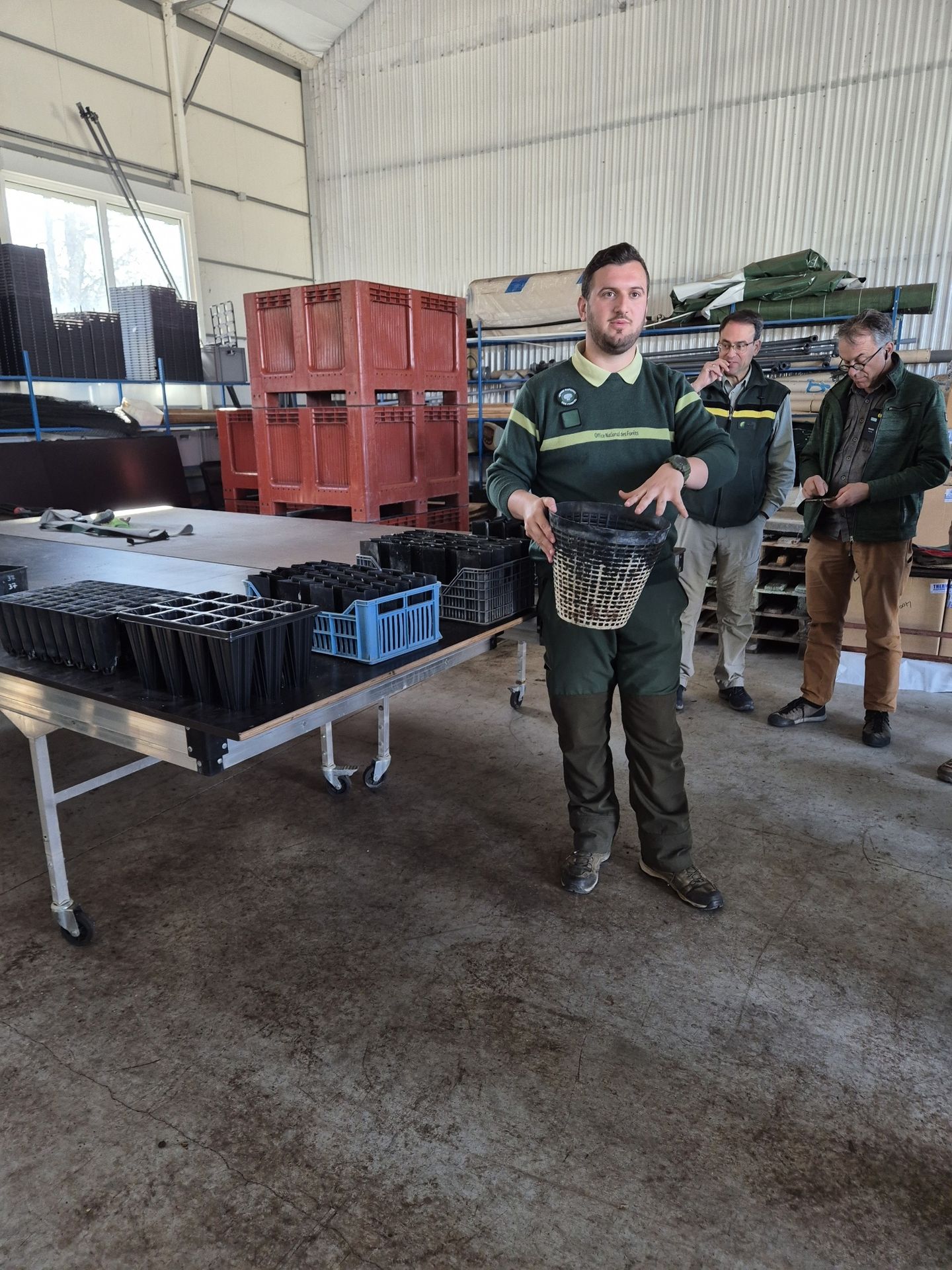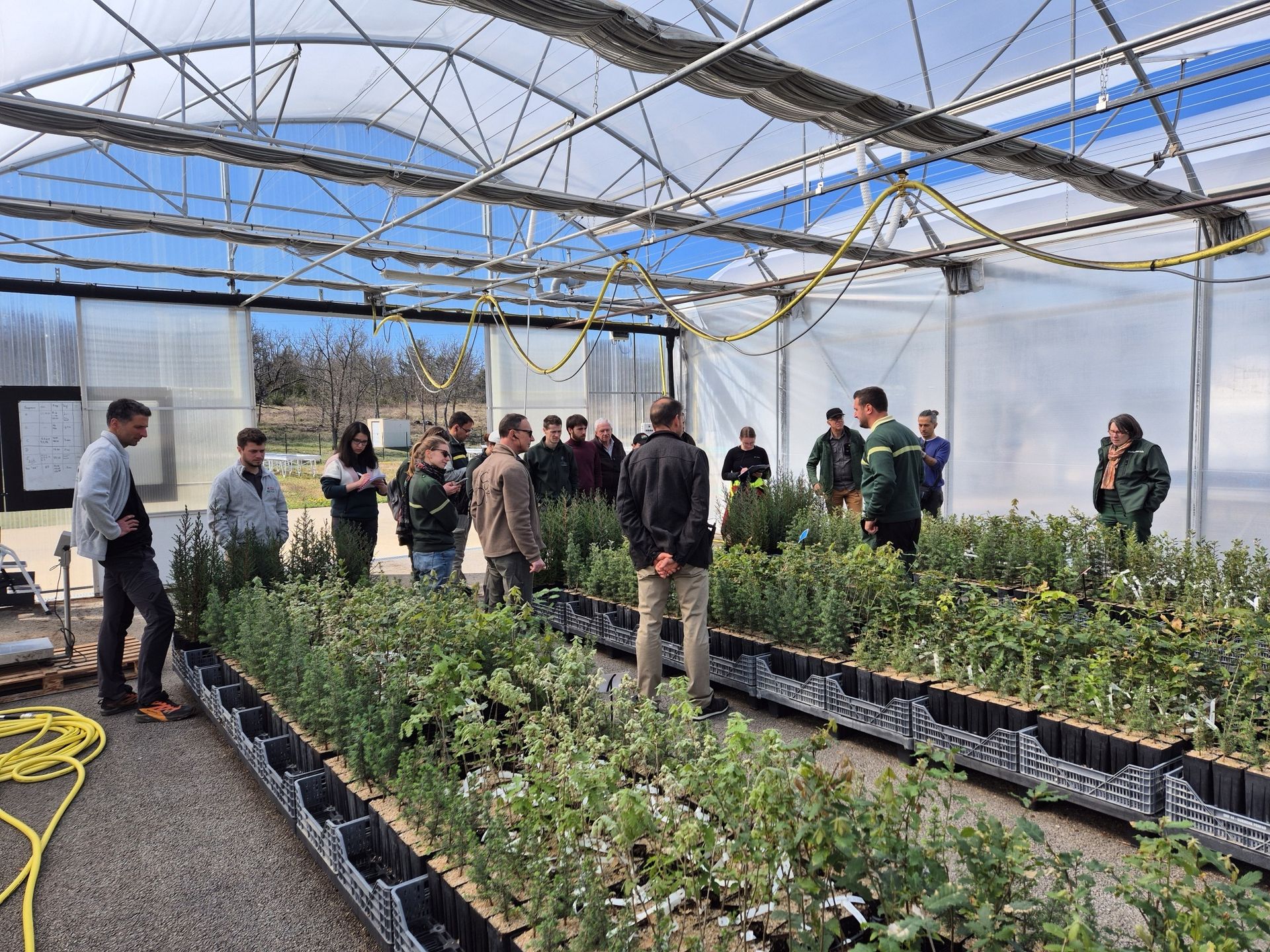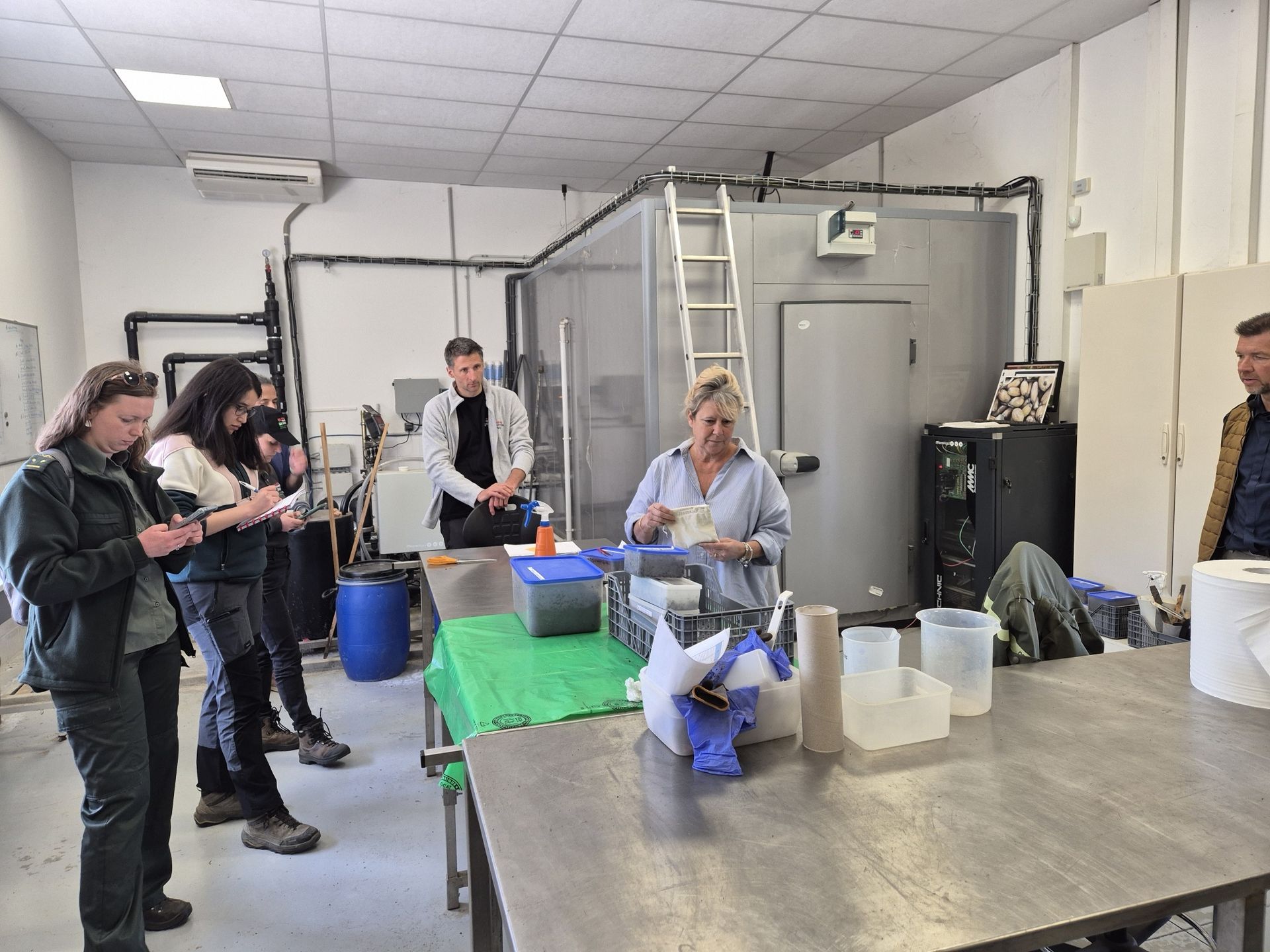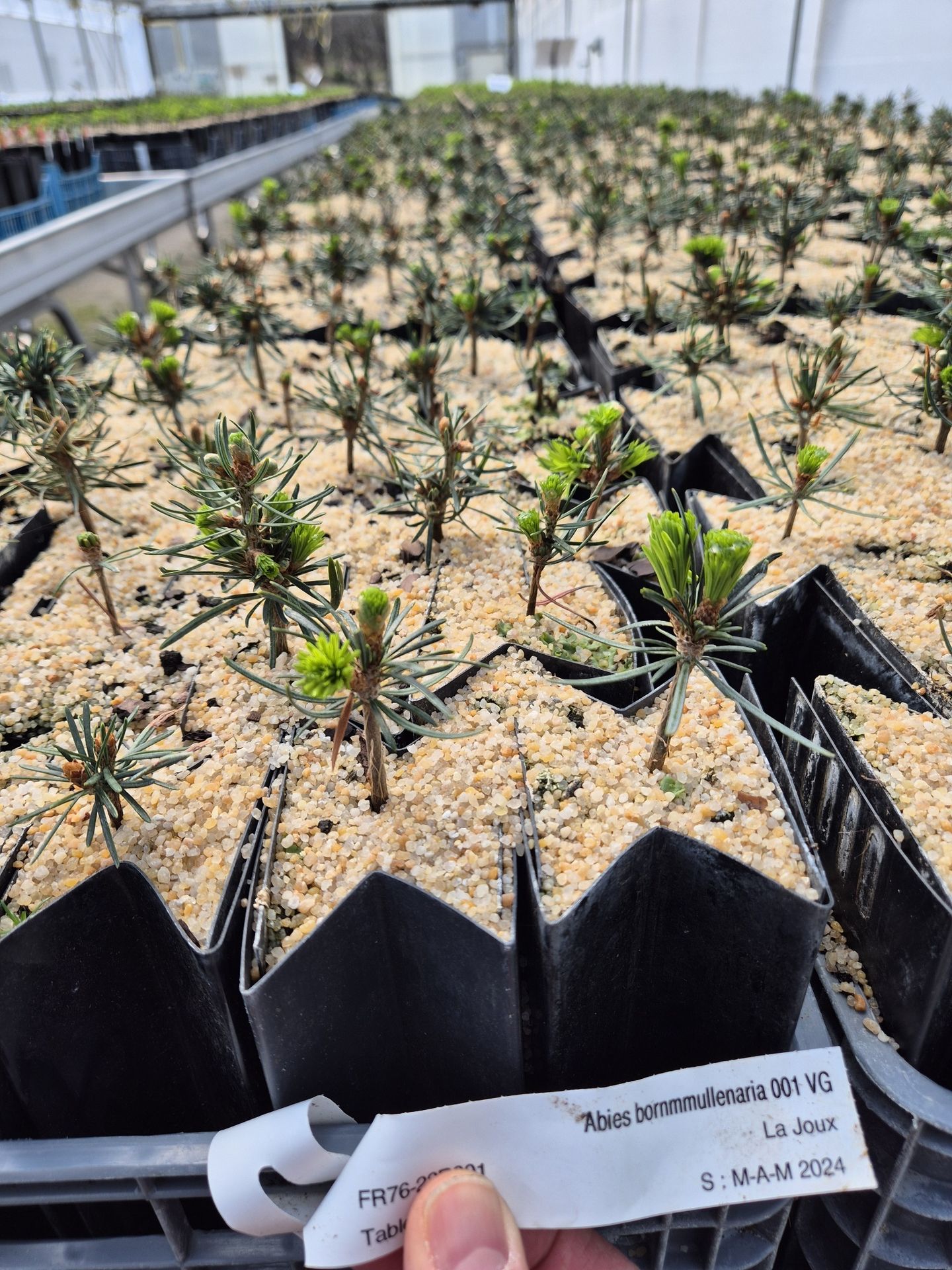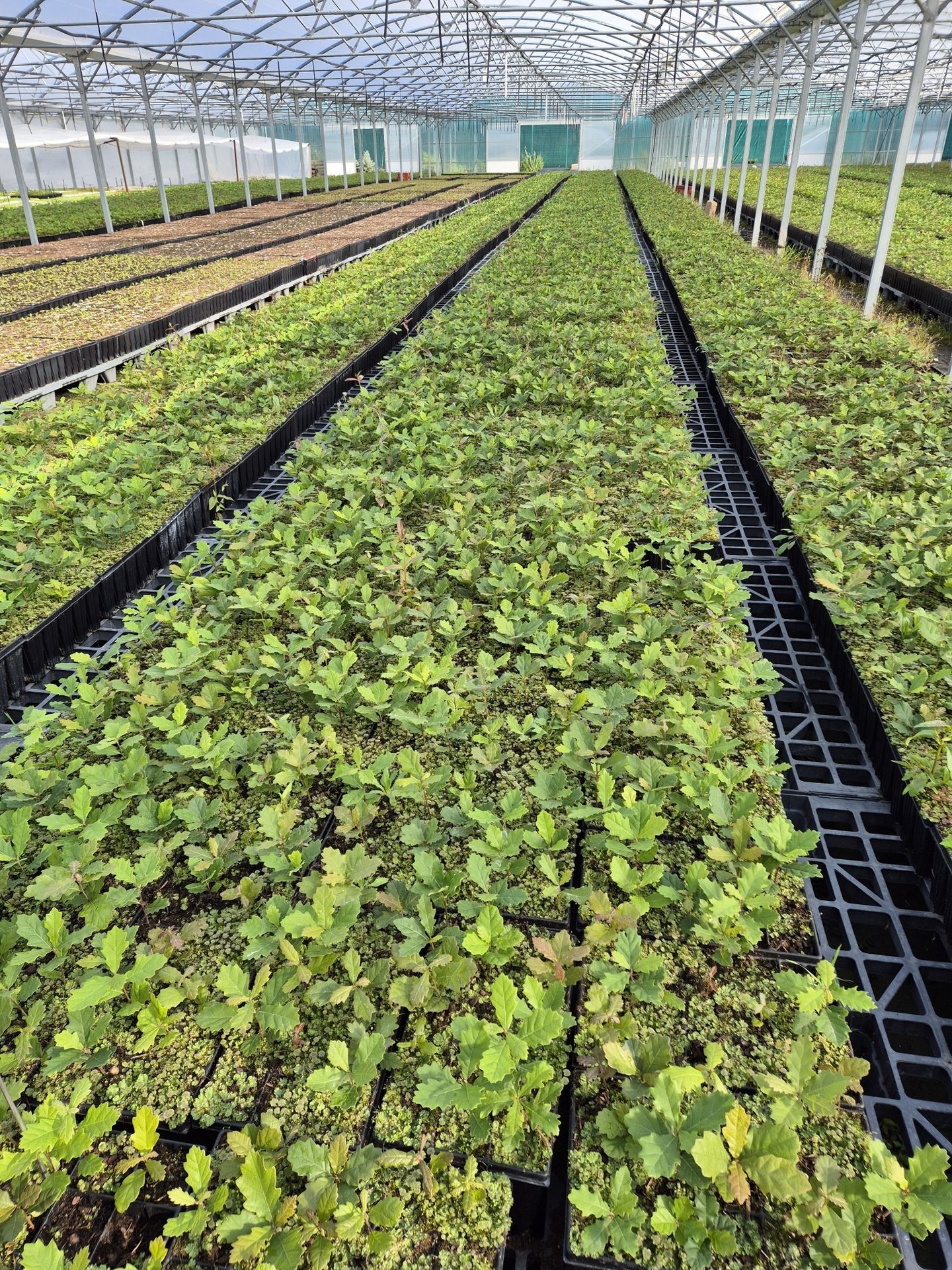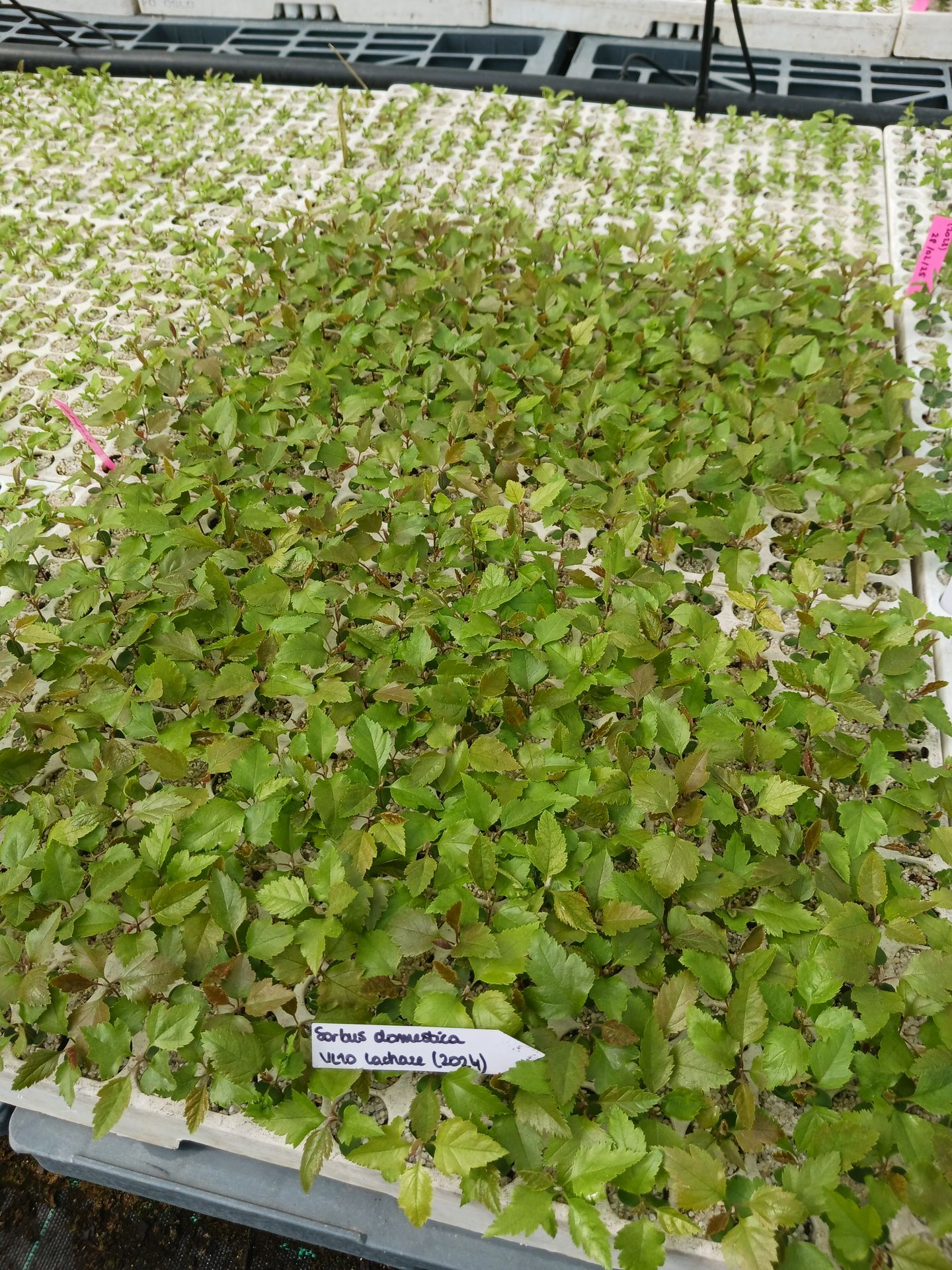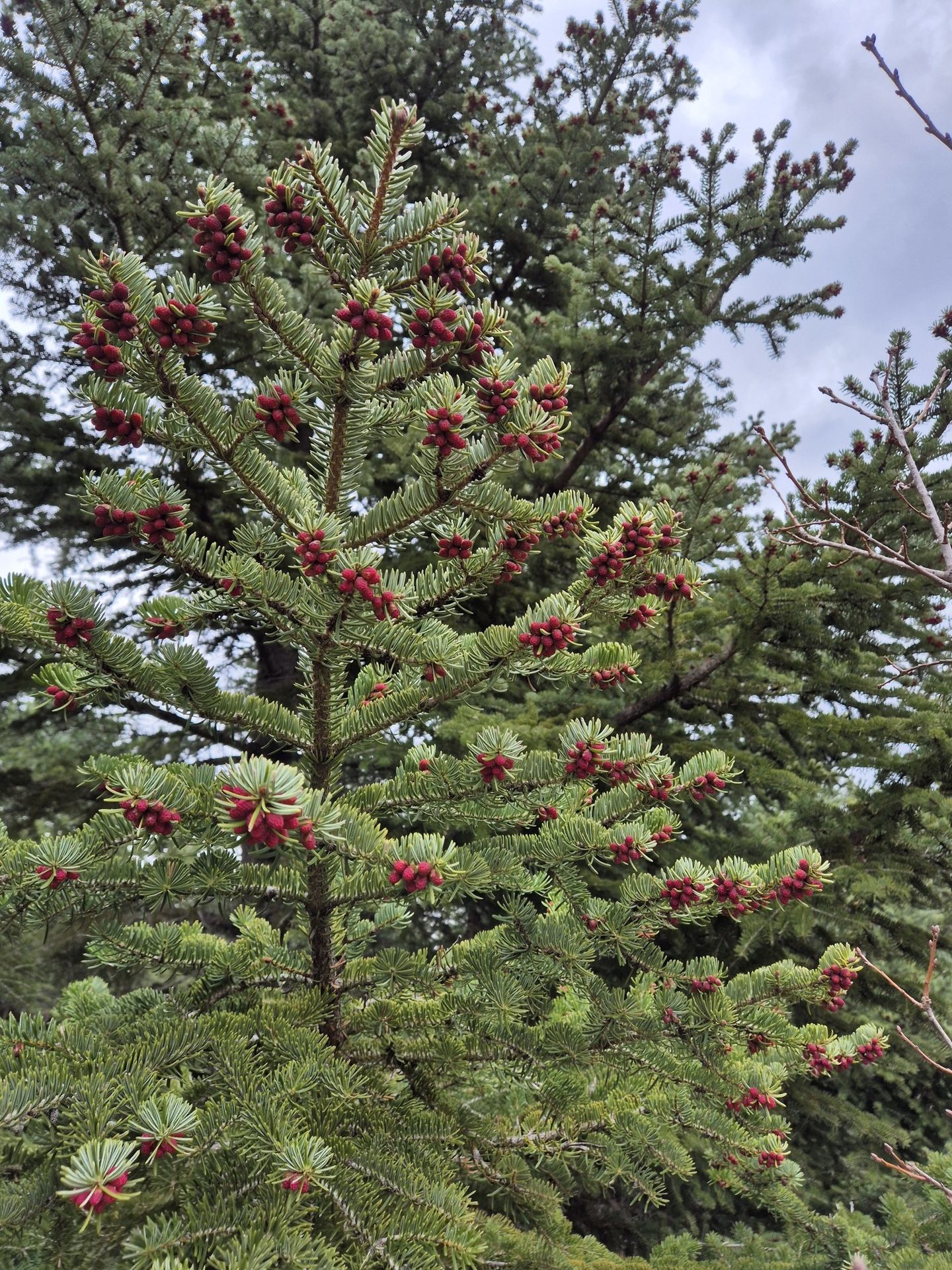On the first and second of April, the MigFoRest partners invited forest managers (public and private), nurserymen and researchers in the Provence (southern France) to learn from the experience of their peers from the South.
Gathering 31 forest experts from Belgium, France, Germany and the Netherlands, this study trip in the area of Aix-en-Provence was an opportunity to see in the field how “Southern” species and provenances, which are part of the MigFoRest’s selection for assisted migration, are grown, from seed orchard to nursery to young forest stands in the area.
Program highlights
- Day 1:
- Welcome and general presentation on the MigFoRest project and assisted migration .
- Visit to the Office National des Forêts’ (ONF) experimental nursery in Cadarache, focusing on hydric stress testing and genetic comparisons of Abies species.
- Visit to a pubescent oak (Quercus pubescens) stand in ONF Cadarache domanial forest.
- Day 2:
- Visit to Naudet private nursery in Lambesc, known for its expertise in a large variety of forest species, including a lot of Mediterranean species.
- Visit to Greek fir (Abies cephalonica) seed orchard in Lioux (Saint-Lambert woods).
The visits to the nurseries were a unique opportunity to see the different processes to manage the seeds and seedlings in a very practical way, from the labs to the greenhouses to the storage places. Hands-on information was given on the techniques and tools used, including various container sizes, substrates and different treatments.
In the ONF experimental nursery, the focus was put on hydric stress testing and conservation efforts (notably on the Salzmann pine).
In the Naudet private nursery, the focus was more on the large-scale production of seedlings, based on dry seeds and stratified seeds techniques and limiting the use of chemical treatments. The Naudet’s facility in Lambesc covers an area of 5 ha, with a production capacity of 2.5M plug plants (mainly forestry plants, some ornamentals).
The visit to the pubescent oak stand triggered insightful discussions on the different harvest methods used, on the optimization of the seed production and on the importance of hybridization of oaks to maintain a large genetic diversity.
The visit to the first Abies cephalonica seed orchard in France, planted by INRAe in 1979, was an eye-opener on the adaptability of this species originating from Greece, known for its resistance to drought.
Overall, the study visit underscored the importance of collaboration between Northern and Southern forest professionnals. Later this year, we are planning a visit to the Balkans, to further enhance the sharing of knowledge around a common goal: make our forests more resilience in front of climate change.
